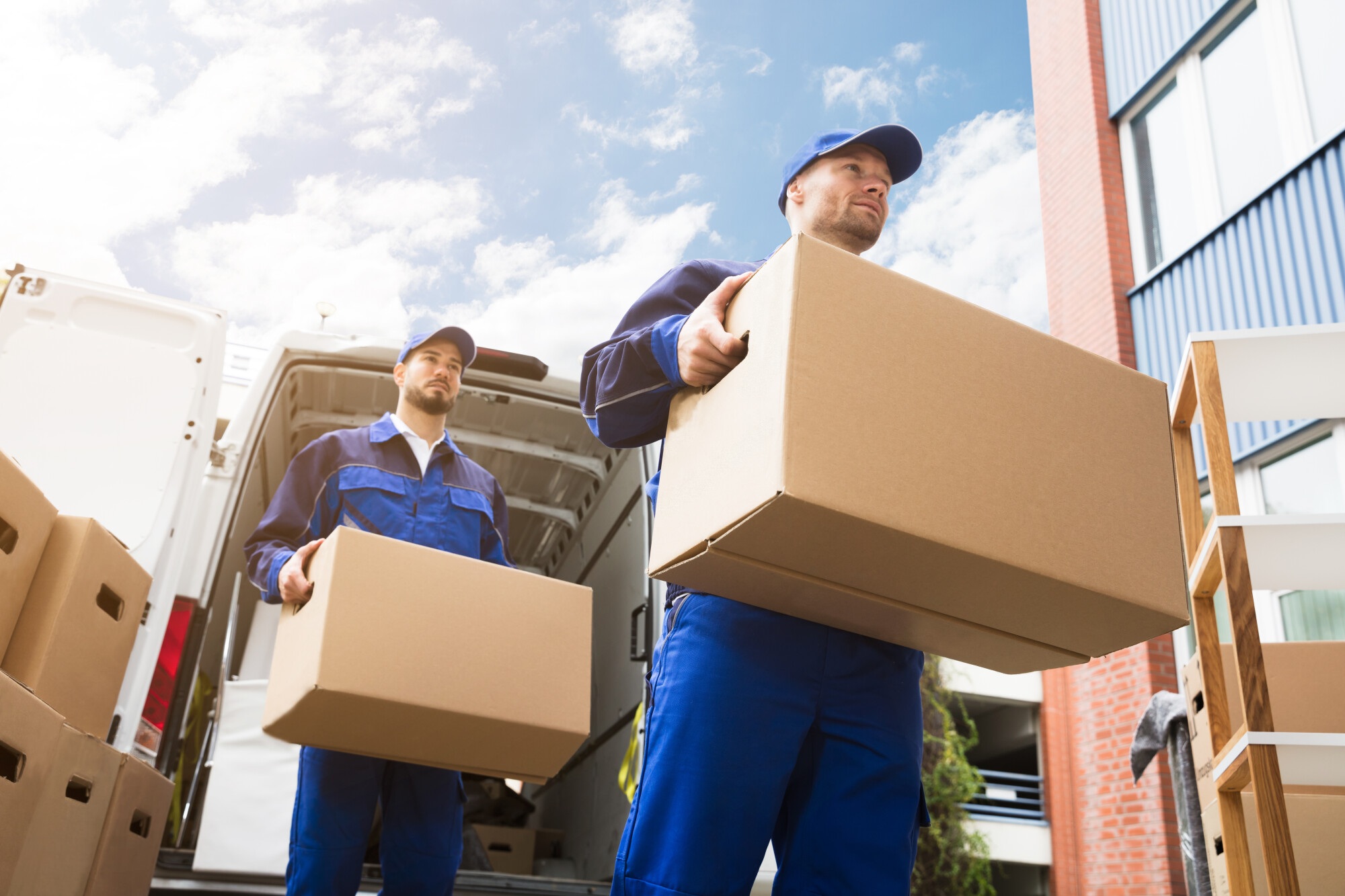In 2022, over 25.6 million people moved in the US. While the majority of moves are local, that doesn’t mean they’re not just as stressful as moving to another state or even across the ocean!
If you’re moving soon, you might be overwhelmed and panicking. Where do you even start?
Whether it’s your first move or you’re a seasoned pro, we’re here to help you out with these epic packing and moving tips of 2024.
Start Early
When it comes to moving tips and tricks, this one might seem painfully obvious. Yet many people don’t start planning and packing until it’s too late, and it ends up in a mad dash.
Think about when your moving date is and how long you need to prep. Now double it, because we guarantee that you’ll hit some bumps along the way.
Maybe you get sick and can’t pack for days, or maybe you’re obligated to pick up a few extra shifts one week. You could have a family emergency, or simply not feel up to packing on a certain day. As you procrastinate, time passes.
Whatever it is, life happens. You need to factor that in to make your move successful and as stress-free as possible.
Create Checklists
Before you start running around to set the move in motion, sit down and create a game plan. You might be itching to get moving, but taking this extra bit of time to get a general picture of everything will help immensely.
Create a checklist of everything you need to do before you move. Here are some examples of important tasks you need to take care of:
Giving notice to your landlord
Changing your address for bills
Canceling services such as internet, phone, and utilities
Requesting family medical records from your doctor
Gathering important documents, such as birth certificates, passports, and driver’s licenses
Then, you should think about all the major parts of the move that need to be done. For instance, you might need to:
Quit work or take time off
Sell or donate furniture
Pack all your belongings
Hire professional movers
When you have a comprehensive overview of what’s involved, you can plan out a rough schedule to stay on track. If you’re moving across the country, check out our checklist for cross-country moves.
Sort Out Your Belongings
You might’ve heard about the KonMari Method, which focuses on decluttering to “tidy up your life.” While you don’t have to follow Marie Kondo’s method exactly, there are some good points to consider.
When you’re moving, chances are you won’t want to take everything (or pay to move it). You need to take some time to sort out your belongings to figure out what can and can’t go to your new home.
Again, starting early will help immensely. This gives you enough time to take the appropriate actions for your things.
Go through your possessions and decide which of the 4 piles they’ll go in: keep, sell, donate, or trash. You don’t have to do this all at once either. Think about tackling separate rooms on different days to make it more manageable.
What should you do after you’ve sorted everything? Find out below.
Sell Pile
Selling is a bit more complicated because there are so many channels you can do it through. For example, if you want to sell your clothes, you can always bring them to a thrift shop or list them online.
The thrift shop option might be easier if you have a car. All you have to do is load it up, bring your things, and then get paid for all of them.
Listing your items online can take a bit more time. You have to create the listings, respond to those who are interested, meet up with them, and then take the listings down. However, you’ll probably get a better price for your possessions through this method, so if you’re hurting for cash, consider this option. Just make sure that you start early, as it’s a time-consuming process!
Keep Pile
Once you have your keep pile, you can sort it even more thoroughly. If you haven’t already done so, separate your things by categories, such as room or use. This will make unpacking much easier when everything is grouped together.
As you’re going along and sorting your belongings, you might even want to start packing to save some time. But if you want to just get the sorting done quickly, that’s fine too.
Donate Pile
Maybe you don’t want to deal with selling your items. Or maybe you want to make sure your belongings are well appreciated by those in need.
In any case, you can donate them to organizations like Salvation Army or other thrift shops. Simply round up all your stuff and drop it off at their store. For bigger items (like furniture), you can even call and schedule a pickup appointment so you don’t have to do a thing.
Or if you want to make it more personal, you can list your things online to give away. Again, this will take longer to do, so it might be a better idea to just donate to a large organization to save some time.
Trash Pile
Depending on how big your pile is, you might be able to throw these things away with your weekly trash pickup. It might take several weeks for some people to completely clear this pile, so you already know what we’re going to say: start early!
If you have electronics or other hazardous materials in this pile, then make sure you dispose of these items properly. Don’t put it in your trash bin, as these things will just end up in the landfill. Some local businesses might have recycling bins, so be on the lookout for those the next time you go shopping.
Get High-Quality Moving Boxes
Now that you’re done decluttering, you’ll probably feel some relief. You’ve gotten rid of all unnecessary items so you don’t have to spend countless hours packing.
The next step is to get moving boxes and other packing materials. Now, you might be tempted to pick up some free boxes that have been used multiple times by people in your shoes. But they might be a bit mushy and weak.
One of the key packing tips for moving is you should always invest in some high-quality boxes. Used is fine, so long as they seem sturdy still.
Don’t try to save a few bucks by using the mushy ones. Not to mention, you don’t know where these boxes come from, which might mean you can inadvertently bring about a bug infestation in your new place.
The best thing you can do is buy your own new boxes. This ensures that they’re clean and won’t rip in transit.
Buy the Right Packing Materials
Next, gather your packing materials. Some items can be protected with newspaper or brown packing paper, but you shouldn’t take a chance with fragile possessions.
Here are some of the things you’ll need for packing:
Duct tape or packing tape
Plastic wrap
Bubble wrap
Wool string
Packing paper
Packing peanuts
Newspaper
Markers
Labels
For a more comprehensive list, check out our ultimate moving supplies checklist.
If you’re planning on doing all the manual labor yourself, you need the right equipment to avoid injuries or damage. Some things you should have on hand include:
Dollies
Lifting straps
Cargo straps
Furniture pads
Moving blankets (or old blankets)
If you’re renting a moving truck, get one that has a ramp to make loading and unloading your boxes and furniture easier.
Take Packing Slowly
Some people might handle packing best by procrastinating and doing it all at once in a few days. But that can be extremely stressful!
Instead, tackle this monumental task by breaking it off into chunks. If you pack an hour or two every day, then it won’t seem as daunting a task and you won’t be as anxious about it.
Whether it’s tips for moving out of state or just across the street, you’ll always see this one suggested. Taking things one step at a time ensures that you can handle all your daily duties while still getting essential packing done.
Prioritize Your Belongings
You won’t need every item equally, which means you can get a head start on packing without putting away anything that’s essential. For example, if it’s currently summer, you can start off by packing away all your winter clothes.
Basically, you should start off with the non-essentials and end with the essentials. That way, you can use things like your toothbrush, computer, and pots and pans until the very last second.
Packing this way also allows you to grab the essentials right when you move in as well. Your essentials will be loaded into the car or moving van first since they were the last things you packed (they’ll be at the front of the pile of boxes).
This means they’ll be the last things out. They’ll be at the front of the boxes pile again at your new place, so you can easily access these essentials.
Always Use the Right Size Boxes
Using the right size boxes will ensure that they’re easier to lift and won’t rip either. If you’re packing heavy items, use smaller boxes, and if you’re packing light items, use bigger boxes.
Also, you should stack items correctly. Put the heavier things on the bottom of the boxes and the lighter ones on top.
Even when you use the right size boxes, there might be some gaps and empty spaces inside. Don’t just tape up the boxes.
Instead, fill in these empty spaces with packing paper or foam peanuts. You can even stuff it with some clothing or old rags. Whatever you do, make sure everything inside is firmly in place so they won’t shift and potentially get damaged while in transit.
If you’re packing fragile items, like dishes and vases, feel free to go wild with padding. You can never have too much of it, especially if you’re protecting family heirlooms.
Roll, Don't Fold
A good portion of your possessions is probably clothing. So it stands to reason that your clothes will take up a significant amount of space.
Instead of folding everything, roll instead. This will give you some extra space to work with.
If you’re really desperate, try using a vacuum seal bag. This will take out all the bulk and will also protect your garments from dust and moisture. It’s a win-win situation!
Get Creative
Empty space will be your enemy when packing. So feel free to get creative to make the most of space!
For instance, instead of packing away your laundry hamper, fill it with clothing instead of packing those garments away into boxes. Do you have a bunch of drinking glasses that need to be cushioned inside boxes? Stuff them with socks and even underwear to give them extra security.
The more you can Tetris your belongings, the better!
Label Everything
You might think you know exactly what you’ve packed into each box, but once your move’s underway, your memory will probably become hazy.
When you’ve taped up the boxes, take an extra moment to label your boxes. Don’t be vague and just write “bathroom” on it. Chances are, you have several boxes in the same category!
Instead, write down something like “Bathroom: toiletries” so you’re not flipping through all the boxes once you’re moved in. You’ll know exactly which box to go to for the things you need.
Consider color-coding each room as well. It’ll take just one glance to know where you’ve got the right boxes or not, and it’ll also be easier to group them when you move in. If you’ve hired professional movers, this will make it easier for them to unload your boxes, too.
Pack Liquids and Hazardous Materials Separately
Mixing and matching items to use each box is important, but some items should be shipped separately.
Here are some items you need to pack on their own for safety:
Cleaning chemicals
Paint and varnish
Batteries
Fire extinguishers
Because some of these things can be dangerous if they leak (especially if they’re corrosive), you might want to consider using plastic totes instead of cardboard boxes for them. Like your fragile belongings, make sure these hazardous items are well-cushioned and packed tightly.
Organize and Pack Important Documents
One of our best packing and moving tips is to get all your important documents in order. Get plenty of folders so you can organize and find them easily.
Some folder categories to consider include:
- Tax returns
- Receipts
- Birth certificates
- Social Security cards
- Passports
- Car titles
- Vehicle registration records
- Medical records (including those for your pets)
- Copies of leases
- Copies of insurance policies (health, life, renters, homeowners, etc.)
On the day of your move, make sure you bring these documents with you. They should always be within reach of you, meaning you shouldn’t pack them in a professional mover’s truck.
Look at Your Storage Options
Sometimes, try as you might, you just can’t downsize quite enough for your move. In that case, you’ll want to consider your storage options. What’s available to you will depend on how much stuff you have.
For example, it’s possible to store some boxes at your parents’ house. Or you might have enough generous friends to spread your boxes across all of their friends.
But if you have larger belongings or an excessive number of boxes, you might have to rent out a storage unit.
Shop around to see what’s available so you can pick the right storage unit for your needs and budget. Some might allow you 24-hour access, others might have temperature-controlled units. By taking the time to look around, you’ll be able to find the perfect choice!
Hire Professional Movers
Moving can be overwhelming. Hiring professional movers takes the burden off of you and gives you the benefit of their experience and expertise with relocations. Some movers only transport belongings, but many offer services like packing and unpacking or storing your boxes in secure units.
When you hire a company that offers comprehensive services, the main things you’ll have to deal with are sorting out your items and determining what to keep and what to get rid of. After that, the movers do all the work.
Of course, this will add to your moving costs. Local movers can cost you about $80 to $100 per hour for 2 movers, while a move of over 1,000 miles can cost you around $5,000. Long-distance moves can cost up to $10,000.
The prices range based on your inventory of belongings, travel distance, and extra services. You can get a better idea of what you’ll pay with a moving cost calculator.
When you hire the pros, don’t just go with the first one you speak with. Request free quotes from at least three different companies and compare them. This will give you a better idea on what you should pay and whether a company is offering fair rates for their services.
Hire Professionals to Transport Your Vehicle
As you’ve seen from all the above, there’s a lot to do to pack and prepare for a move. So why should you have to worry about transporting your vehicle on your own?
It’s true that you can save a little bit of money by driving your car from start to finish on your own. You can even cram it full of boxes so the movers won’t have to move as much stuff for you.
But the truth is, if you’re moving at least a few hours away, it’s worth every penny to hire professionals for the job.
An auto transport company can pick up your car and drop it off so you won’t have to worry about it at all. All cargo is insured so if anything happens, you’ll be completely covered. This also prevents you from racking up miles on your odometer, which can cause unnecessary wear and tear, especially on older vehicles.
Plus, you can choose between open or enclosed car haulers. This flexibility allows you to pick the option you’re comfortable with and can afford.
So when it comes to moving across country tips, hiring an auto transport company is one of the best ones we have for you!
Use These Moving Tips for an Easier Time
Relocating can be a huge ordeal, whether you’re moving to another part of the city or to another country. Without proper planning and knowledge, this time in your life can quickly become a complete mess.
But with our moving tips, it won’t be. Here, we’ve given you everything you need to know for packing and moving. So take this new information and put it to good use to make things easier on yourself!
Do you need to transport your car for your upcoming move? Then use our cost calculator now to get a quick and free estimate!



